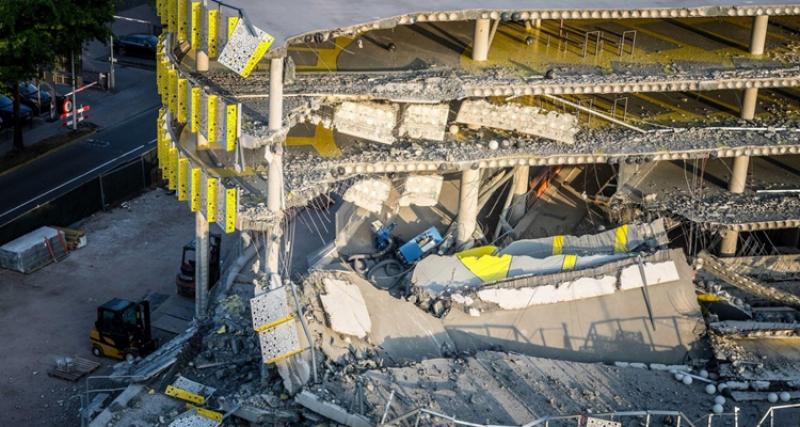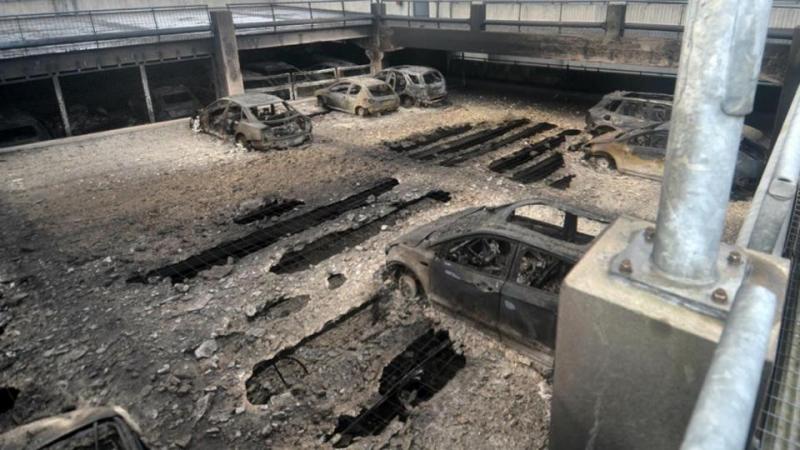Through the ABCB’s involvement in the Inter-Jurisdictional Regulatory Collaboration Committee, the ABCB has learnt of two incidents involving multi-storey carparks.
The following incidents are of a structural and fire safety nature. The ABCB wishes to share this information with Australian construction industry to raise awareness of these occurrences.
BubbleDeck Collapse – Eindhoven Airport, Netherlands

BubbleDeck is a system that uses spherical recycled plastic void formers that are laid in a grid prior to slab pour. This enables savings in cost, weight and construction times.
Initial failure of the top floor created a progressive collapse sequence for the floors below. The root cause of this collapse has been identified as concrete bond failures triggered by differential solar gain.
This differential solar gain was the result of high surface temperatures of the slab while the soffit remained relatively cool. This was exacerbated by the insulation qualities of the BubbleDeck spheres.
The large variance in temperatures would increase stress in areas of the slab that were already highly stressed. The result was failure along a longitudinal joint. This joint was later identified as the area of maximum positive bending moment.
The Dutch research organization, TNO, carried out a report that identifies several recommendations that look to minimise the possibility of similar incidences occurring in the future. These included a reduction of bending moments at the joints and a more adequate bond between the cast in-situ and precast section of the BubbleDeck slab.
Fortunately, noone was injured as a result of the collapse.
Multi-storey Carpark Fire – Liverpool Echo Arena, England

Forensic investigations are currently on-going with a report pending on the multi-storey carpark fire at Liverpool Echo Arena.
The fire caused severe damage to the carpark with a total of 1,400 cars destroyed, and fortunately there were no casualties. The fire started in a vehicle on the third floor, this spread to several other cars before fire authorities arrived.
Firefighters were unable to prevent the vertical and horizontal spread of fire within the carpark, although they were able to prevent it from spreading to adjacent buildings.
The damage to the carpark was extensive. The precast ribbed floors disintegrated in some places, while other areas saw partial collapse. The columns and beams were, for the most part, undamaged. The fire doors performed as designed and remained intact. The fire stairs experienced some cracking, presumably due to the thermal movements before and after the fire.
Specific guidance on lessons learnt and potential regulatory changes following this incident will come from consideration of the official investigation reports from Liverpool.